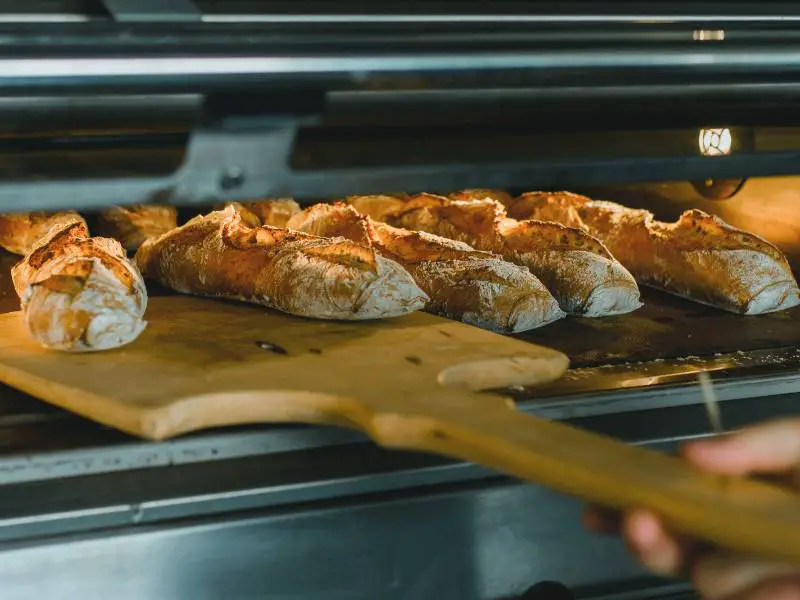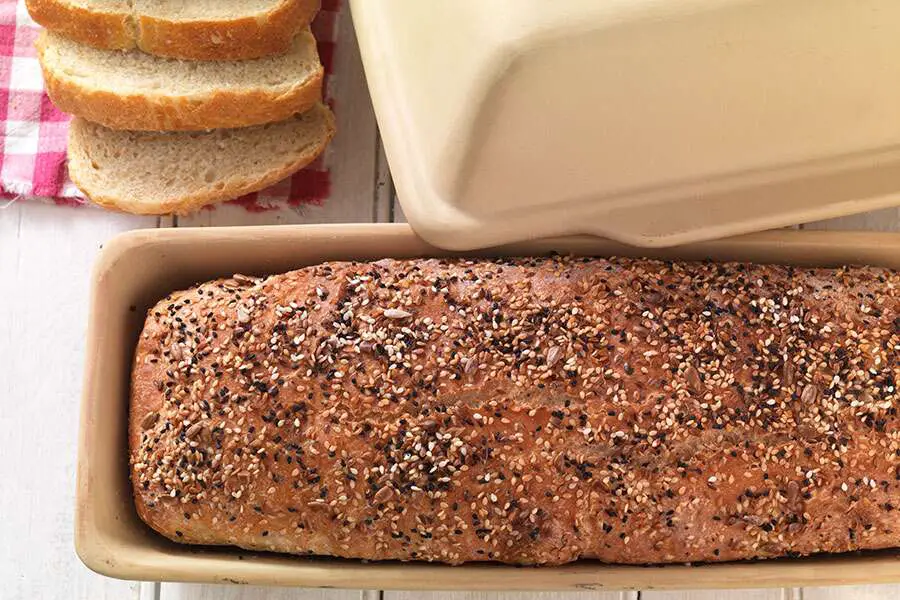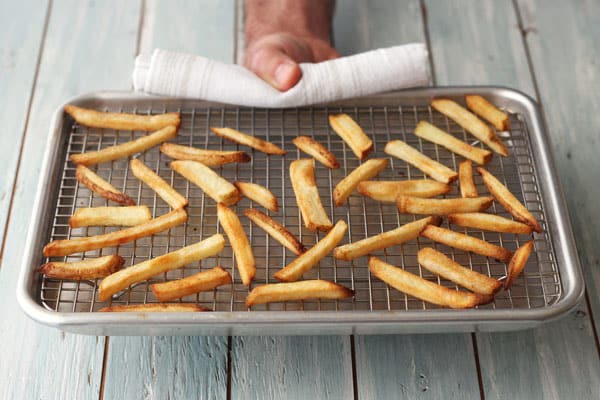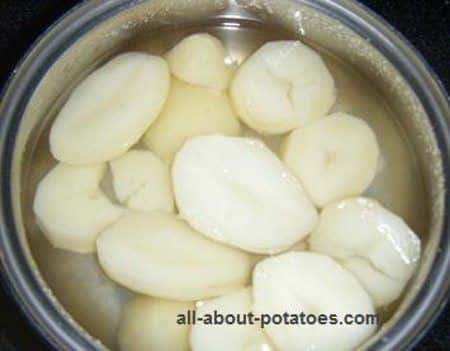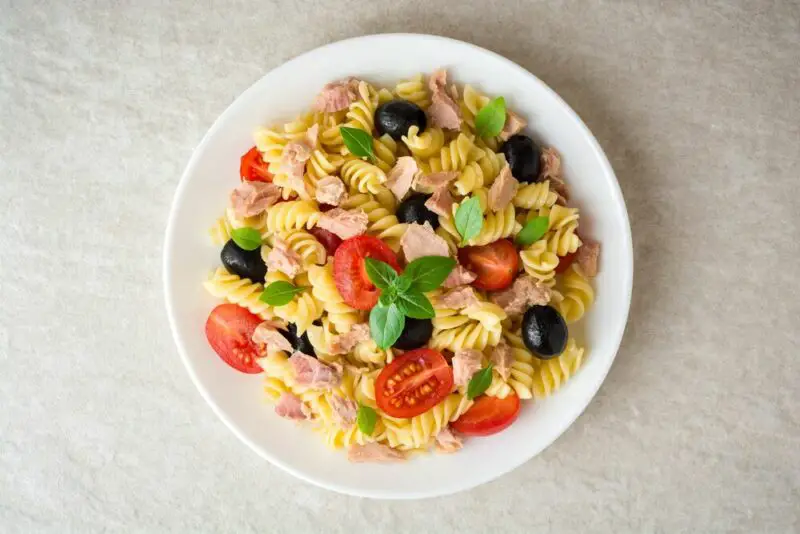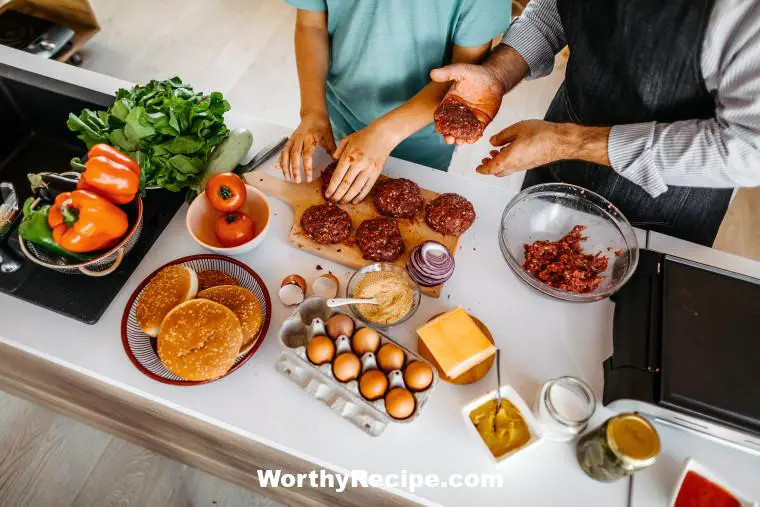How Many Loaves Can You Bake at Once?
Whether you’re a seasoned pro or a novice baker, one question that’s likely crossed your mind at some point is: How many loaves can you bake at once? The answer depends on a variety of factors, from the capacity of your oven to the type of bread dough you’re working with. In this article, we’ll explore everything you need to know to maximize your baking output and produce delicious bread every time.
Understanding Oven Capacity
The first thing to consider when answering the question of how many loaves you can bake at once is the capacity of your oven. Ovens come in a variety of sizes, each with its own maximum capacity for baked goods. Here are some common types of ovens and their approximate capacities:
- Toaster oven: 1-2 small loaves
- Convection oven: 3-4 medium-sized loaves
- Standard home oven: 5-6 medium-sized loaves
- Baker’s oven (commercial): Up to 60 large loaves
It’s important to note that these are just general estimates, and your oven’s capacity may differ depending on its specific make and model. Additionally, there are several factors that can impact your oven’s maximum capacity:
- Rack spacing: The distance between your oven racks can affect how many loaves you can fit in at once.
- Baking sheets vs. baking stones: Depending on what type of surface you’re baking on, you may be able to fit more or less bread in the oven.
- Oven temperature: Some ovens have temperature variations between different zones, which can affect how evenly your bread bakes.
One helpful rule of thumb when it comes to maximizing your oven’s capacity is to avoid overcrowding. Not only can this lead to uneven baking and potentially burned bread, but it can also impede proper air circulation and prevent your loaves from rising as they should.
Finally, it’s worth considering what size loaves you’re hoping to bake. The average size of a loaf of bread is around 1-2 pounds, so if you’re aiming for larger or smaller loaves, keep that in mind when calculating your oven’s max capacity.
Calculating Maximum Loaf Capacity
Once you have a good sense of your oven’s maximum capacity, the next step is to calculate how many loaves you can bake at once. To do this, you’ll need to consider a few key factors:
The load factor
The load factor refers to the amount of space in your oven that’s actually being used by the bread dough. If you’re baking small loaves spaced far apart on a single rack, your load factor will be lower than if you’re baking larger loaves packed closely together. In general, a load factor of 70-80% is considered optimal for maximizing your oven usage while still ensuring good results.
The formula
To calculate maximum loaf capacity based on your oven size and load factor, use the following formula:
Oven size (in cubic feet) x Load Factor (%) / 1.25 = Maximum loaf capacity
For example, let’s say you have a standard home oven with a capacity of 5 cubic feet. Using a load factor of 75%, we would calculate:
5 (oven size) x 75 (load factor) / 1.25 = 300/1.25 = 240
So the maximum number of loaves you could bake at once in this scenario would be 240.
Factors That Affect Loaf Capacity
In addition to oven capacity, there are several other factors that can impact how many loaves you can bake at once:
Types of bread dough
The type of bread dough you’re working with can affect its ability to rise and expand in the oven. Bread dough with a high hydration level (i.e. lots of water) will be more likely to spread out or collapse if baked too closely together, while dough with a lower hydration will hold its shape better. Additionally, enriched breads like brioche or challah may require more space in the oven due to their added butter and sugar content.
Shaping and proofing techniques
The way you shape and proof your bread dough can also impact its size and quantity. For example, a tightly coiled baguette may take up less room than a more loosely shaped loaf of sourdough. Similarly, if you’re proofing your dough in baskets or other vessels, you’ll need to factor in their size when calculating your loaf capacity.
Baking time and temperature
Different types of bread require different baking times and temperatures, which can affect how long each loaf needs to stay in the oven. If one loaf requires significantly less baking time than another, you may be able to fit more of them into your oven at once.
Strategies to Maximize Loaf Capacity
Now that we’ve covered the key factors that affect your ability to bake multiple loaves at once, let’s look at some strategies for maximizing your loaf capacity:
Organize your baking process
Taking a thoughtful approach to organizing your baking process can help you make the most out of your oven space and time. One strategy is to stagger your bread doughs so that they’re ready to bake at different times. For example, if one loaf needs to proof for 90 minutes while another only requires 30 min, start with the longer proofing time and then move on to the shorter one once it’s finished. This will allow you to make use of the downtime while ensuring that you’re never left waiting around for dough to be ready.
Follow an efficient baking schedule
Depending on what types of bread you’re making, there are a variety of scheduling options that can help you maximize your oven usage. For example:
- Bake bread with similar baking times together, so that you can load and unload the oven quickly.
- If a recipe calls for multiple rises or proofs, try to complete them all at once so that everything is ready to go into the oven.
- Consider using pre-fermented doughs (like sourdough or poolish) that require longer fermentation times but less overall active time.
Invest in helpful tools
Certain tools, like a proofer or couche, can help increase your bake yield and make it easier to fit more loaves into your oven. A proofer is essentially a temperature- and humidity-controlled box that allows bread dough to rise more predictably and uniformly than if left out at room temperature. A couche, meanwhile, is a linen or canvas cloth used for proofing bread dough; it helps hold its shape and prevent spreading by providing support from all sides.
Avoiding Overcrowding in the Oven
As we’ve mentioned earlier, avoiding overcrowding in the oven is key to producing evenly baked, properly risen bread. Here are a few tips for ensuring that there’s enough space between your loaves:
- Leave at least an inch or two of space between each loaf, both horizontally and vertically.
- If you’re baking loaves on multiple racks, alternate their placement so that there’s space between each one.
- Consider using a baking stone to help distribute heat more evenly; this will also give you the added benefit of being able to fit more loaves in the oven since they won’t be restricted by baking sheets.
Common Challenges in Baking Multiple Loaves at Once
Even with careful planning and organization, there are some common challenges that can arise when trying to bake multiple loaves at once. Here are a few common issues and how to troubleshoot them:
Uneven heat distribution
If your oven has temperature variations between different zones (often between the bottom and top of the oven), it may be difficult to produce evenly baked bread. One strategy is to rotate your loaves halfway through the bake time so that they’re exposed to both top and bottom heat. Alternatively, consider investing in a baking stone or steel; these can help distribute heat more evenly throughout the oven.
Under-baked loaves
If you’re trying to bake too many loaves at once, it’s possible that they won’t bake fully even if they look done on the outside. To avoid this, use a thermometer to test the internal temperature of your bread. Different types of breads will vary in terms of the ideal internal temperature, but a good rule of thumb is to aim for 190-205°F.
Unwanted crust formation
If you’re baking sweeter or enriched breads (like brioche) at the same time as crustier loaves (like baguettes), you may find that the crusts become too hard on one or the other. One solution is to tent your bread with foil halfway through the bake time to prevent further crust formation.
Scaling up Production: Commercial Considerations
If you’re running a commercial bakery or looking to expand your baking operation beyond the home kitchen, there are several additional factors to consider when it comes to maximizing your loaf capacity:
The challenges of scaling up production
While producing larger quantities of bread can be rewarding in terms of increased revenue and customer satisfaction, it also brings its own set of challenges. For example, it may be difficult to maintain consistent quality standards across large batches, especially if you’re working with multiple ovens or bakers. Additionally, financing the necessary equipment (like larger mixers or proofing boxes) can be a significant upfront expense.
Equipment requirements for commercial bakeries
In order to effectively scale up your baking operation, you’ll need to invest in equipment that can handle larger volumes of dough. This might include:
- Larger mixers or spiral dough mixers
- Dough dividers and rounders
- Proofer cabinets or refrigerated proofing rooms
- Larger ovens with multiple racks and/or steam injection capabilities
Additionally, it’s important to make sure that your workspace is set up efficiently; this might include maximizing counter space, creating clear production schedules, and ensuring that bakers have access to all necessary ingredients and tools.
Conclusion
When it comes to determining how many loaves you can bake at once, there are a variety of factors to consider. By understanding your oven’s capacity, calculating maximum loaf capacity using the load factor formula, and being mindful of factors like dough type and shaping technique, you can bake multiple loaves at once without sacrificing quality or consistency. And if you’re looking to scale up your baking operation, investing in helpful tools and equipment can help take your business to the next level.
FAQs about Baking Loaves
Q: How many loaves can I bake in one go?
A: The number of loaves you can bake at once depends on the size and capacity of your oven. Generally, a standard-sized home oven can fit two to four loaves of bread side by side on a single rack, while larger commercial ovens may be able to accommodate up to 20 or more loaves at once.
Q: Do I need special equipment to bake multiple loaves at once?
A: While you don’t necessarily need special equipment to bake multiple loaves simultaneously, having a baking stone or steel can help ensure even heat distribution and prevent the bottoms of your loaves from burning. Additionally, using a Dutch oven or other covered vessel can help trap steam and create a desirable crust.
Q: Will baking multiple loaves at once affect the baking time or temperature?
A: Baking multiple loaves at once may require slightly longer cooking times or slight modifications to the baking temperature. To ensure your bread cooks evenly, rotate the position of your loaves on the oven racks halfway through the baking time and monitor closely for doneness.
Q: Can I mix different types of bread dough when baking multiple loaves?
A: While it is possible to mix different types of bread dough when baking multiple loaves, it’s important to consider how each type of dough will behave during the baking process. For example, if you’re combining a slow-rise sourdough with a quick-rise white bread, you may need to adjust your proofing times accordingly. It’s generally best to stick with similar types of bread when baking multiple loaves for consistent results.
